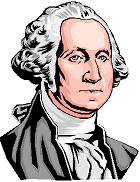…………………………………………………………………………………………
“There are almost as many different definitions of leadership as there are persons who have attempted to define the concept.” R.M. Stogdill, 1974.
Question/statement: “I have taken several leadership classes [my employer] offer[s] but have not chosen to pursue a leadership spot based on how much is actually required from a person in these positions… Sadly, even with all this training I can see a lot of normal politics of people leading by title instead of an earned authority they build with individuals.”
Name: “Brian”
Current Occupation: Retail professional
As a scholar of business (amateur), I get a lot of questions about leadership in organizations. In my last blog entry, I wrote briefly about truly bad leaders. Specifically, I wrote about the worst kind of leaders- those that lead their followers awry, astray, or even abuse them. Horrible leaders are easy to spot. To me, what is more challenging, and is a common source of debate among my friends and colleagues, are the debates about what actually makes a leader. Brian, the thoughtful colleague that helped inspire this blog, had a long, passionate, meandering inquiry. In essence, he isn’t sure what his organization’s definition of leadership is. Brian isn’t alone. Perhaps more troubling, what is your own? We all seem capable of identifying failures in leadership, but many of us have trouble defining what leadership truly is. Below, I hope to discuss the trouble with defining leadership and expectations of leaders, the subtle differences between leading and managing, the idea of followers, and blaming leaders for failure. It’s an ambitious agenda for a blog entry… To that end, let’s think together.
Defining the concept of leadership… great expectations…
It seems business schools have an absolute obsession with teaching leadership. Some business schools even have the words “leader” or “leadership” in their mission statements. For example, Harvard Business School’s stated mission is “to educate leaders who make a difference in the world.” I help to teach a management class for undergraduates here at the Carlson School of Management at the University of Minnesota (shameless plug!). Our students are hit with conceptual information about leadership at page 7 of their textbook, and even given a specific definition. However, I think a more truthful assessment of the collective understanding of leadership occurs much later (ahem, page 316, ahem):
“Despite thousands of articles, books, and research initiatives, few agree on what leadership is and how a person should lead. While the research has not provided all the answers, it has provided useful ways to think about leadership.” (Gulati, Mayo, & Nohria, 2013)
When scholars and practitioners think critically about what leadership is in business, or try to define it explicitly, the concept of leadership itself seems unclear. In 2008, Harvard Business School organized a conference as part of an interdisciplinary discussion on leadership research across the school. The discussion engaged scholars from diverse fields such as economics, organizational behavior, psychology and sociology, amongst others. The idea was to think about the state of leadership research. One set of discussions focused on what many of us consider: the impact of leadership on business performance and the meaning felt by followers within business contexts. The result was a a presentation of various dualities if leadership. These dualities represent a set of theories that are hard to reduce, and often are in direct tension. Below is a list of those dualities, as summarized in the brilliant Handbook of Leadership Theory and Practice (adapted from Nohria & Khurana , 2010). To further illustrate the concepts, below each duality is sample challenging questions. I pose these questions to get us thinking:
1. The duality between the leader’s role in producing superior performance and the leader’s role in making meaning.
Challenging questions: Is the manager that earns profit, but doesn’t make meaning for workers, a leader? Is the manager that provides her employees with meaning in their work, but does not maximize profit, a successful leader?
2. The duality between the leader as a special person (e.g. unique character) and leadership as a social role (relationship between leaders and society).
Challenging question: “Do you think we choose to be born? Or are we fitted to the times we’re born into?” Abraham Lincoln in Lincoln (Spielberg, 2012)
3. The duality between leadership being universal (all leaders do this) and being particular (the person’s identity and/or the demands of the leadership situations are unique).
Challenging questions: Would a specific leader or person be as effective in another line of business? Why do CEOs succeed in one firm, but fail in CEO roles in other businesses?
4. The duality between the leader’s ability to exercise agency (ability to lead, “I got this”) and the leader’s need to attend to constraints (situational demands, “one can only do so much…”).
Challenging questions: Is it reasonable to expect a leader to lead the way you want, given their limited abilities to lead within your organization? Is it reasonable for a leader to limit their efforts because that’s just ‘not the way this business works’?
5. The duality between thinking of leader development in terms that emphasize leaders’ capacity for thinking and doing (building competency) to becoming and being (evolving identity of leaders).
Challenging questions: Do organizations build leaders? Do organizations allow for leaders to emerge, independent of any organization endorsed or imposed definition of leadership? What should organizations do to promote leadership?
The way scholars think about leaders is challenging, demanding, possibly exhausting. However, I think the confusion and dualities make a good point. Before one criticizes leadership, one should consider the grounds for criticism. What am I asking of a leader?
Leading and managing… there is a difference… maybe…
One other area of the debate concerning leadership and performance is the grey area between definitions of leadership and management. Is there a difference between managing and leading within an organization? According to the management textbook in our class at Carlson, people often use the terms management and leadership interchangeably. The differences are muddy, subtle, and debatable:
Table 1: Applied from Gulati, Mayo, & Nohria (2013)
| Leadership | Management | |
| Definition | The ability to drive change and innovation through inspiration and motivation | The act of working with and through a group of people to accomplish a desired goal or objective in an efficient and effective manner. |
| Activities | Set direction | Plan & budget |
| Align people | Organize & staff | |
| Motivate & inspire | Control & problem-solve |
Grey areas indeed. What is the difference between aligning people and organizing and staffing? Isn’t effectiveness a measure of leadership? Managers do not appear to always be leaders. Leaders are not always managers. Managers often have control of resources and discretion, and are often viewed as leaders. But is the manager just using resources efficiently? Ugh. My head hurts.
The untapped role of followers… OR…
Blamestorming? Take me to your leader…
One area of research that is growing surrounds the role of followers. The assumption of a leader includes followers. One theory that explicitly includes followers as active entities (i.e. involved, not just a recipient of leader actions) is leader-member exchange (LMX). The LMX research concerns the quality of a relationship between a leader and a follower. Generally speaking, the idea is that the better the quality of the relationship, as understood and appropriately tailored by the leader, the better the outcomes for individuals and organizations. Also, a supervisor or manager is assumed in these models to be a leader. From our discussion above, this might not be true. Followers may have an important role of identifying leaders, and even affecting the way leaders lead them. So perhaps research should consider followers!
Leaders are not always in an enviable position in respect to followers, either. Whenever failure occurs, often a ‘leader’ is to blame. The CEO is to blame for company failure. The middle managers are to blame for not leading and motivating their staff. The President of the United States is to blame for everything. But what about followers? EnRon’s well documented moral and financial failures in the early 2000’s began with the top company leaders. Those failures also involved a lot of followers at the bottom of the organization chart. The public seemed to hold leaders and followers to different standards of behavior. Also, it seems when businesses succeed, employees are quick to be a part of success, to claim their roles as part of the winning team. It is important to note that a leader who goes astray cannot, by definition, go astray alone. As John F. Kennedy said “Victory has a thousand fathers, but defeat is an orphan.” Wise words from a great leader…
Who knows? We all care!
We are fascinated with leadership. Businesses everywhere have leadership development programs, institutes, workshops, assessments, and other activities designed to promote leadership. The University of Minnesota has at least six centers for leadership across many schools. But, in the end, conceptualizing leadership is messy business. And leadership is messy within businesses. We all know leadership when we see it. Or do we?
So, after all of that, I pose these questions to you (discuss!):
- What do you expect of your leaders? How would you define leadership in your organization? (Good luck!)
- Do you think differently about managers and leaders? How are the words manager and leader used in your organization? The same? Differently?
- How do you view the relationship of organizational performance and leadership?
- What can you do as a leader or follower in your organization? How do others see you?
Don’t forget to LEAVE A REPLY! (click on Comments or Leave a Reply below)
Works Cited
Gulati, R., Mayo, A. J., & Nohria, N. (2013). Management (1st ed.). Mason, OH: South-Western.
Nohria, N., & Khurana , R. (2010). Advancing Leadership Theory and Practice. In N. Nohria, & R. Khurana (Eds.), Handbook of Leadership Theory and Practice (pp. 3-26). Boston: Harvard Business School Publishing Corporation.
Spielberg, S. (Director). (2012). Lincoln [Motion Picture].
Stogdill, R. M. (1974). Handbook of Leadership: A Survey of the Literature. New York: The Free Press.

